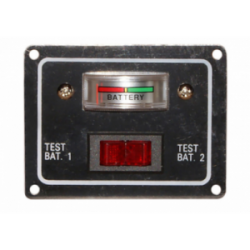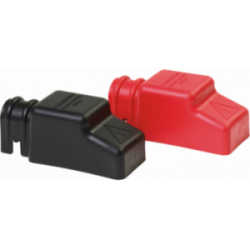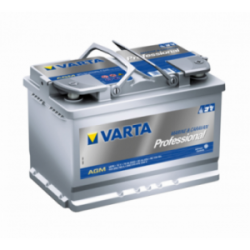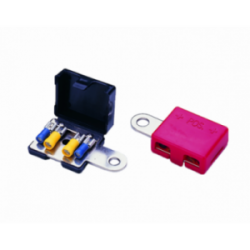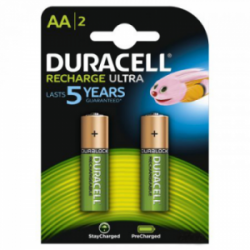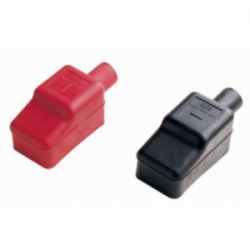LITHIUM BATTERIES RB-24V100 / 24V-100AH
Art. 3940905
RELiON lithium batteries provide more power than lead-acid batteries, increase performance and weigh half as much.
They can be charged quickly, but a slower charging rate of e.g. 2-5 hours is recommended.
Unlike other batteries, leaving them partially discharged does not reduce their life or long-term performance. Their charging capacity is
about 25-50% higher than other models, which ensures prolonged use of the equipment and avoids voltage drops as the charge decreases.
Maintenance-free, they last up to 10 times longer than their lead-acid counterparts, while retaining 80% of capacity after 2000 cycles. They are
more temperature tolerant, being able to operate safely up to 65°C and offer higher performance at low temperatures.
Series or parallel connections
When connecting batteries in series or parallel, please observe the following guidelines:
(1) Before putting them into service, ensure that each battery does not exceed 50mV (0.05V). This will minimise the possibility of imbalance
between the batteries. If they become unbalanced, the voltage of any battery is >50mV (0.05V), relative to another in the set, each battery must
be individually charged to rebalance. (2) Size the batteries in parallel appropriately: the capacity (rated in hours) when connected in parallel
increases by the multiple of the batteries connected (2x, 3x, 4x, etc.). However, the nominal current (discharge and charge) of the batteries in
parallel only increases by 75% of the multiple of the connected batteries (1.5x, 2.4x, etc.) (1.5x, 2.25x, 3x, etc.). (3) Batteries connected in series
charge better as single batteries. Series charging can cause imbalances and reduce operating time, requiring an occasional individual balancing
charge. (4) Please refer to the RELION document on instructions for series and parallel charging.
Discharging the LiFePO4 battery
LiFePO4 batteries can be discharged up to 100% of their capacity. However, to optimise performance and prevent the BMS from disconnecting
it, it is recommended to limit discharge to 80%. Please refer to the battery’s data sheet for the continuous and peak discharge rates of the
specific model.
When to charge the LiFePO4 battery
If LiFePO4 batteries are not fully discharged, it is not necessary to charge them after each use; they will not be damaged if left in a partial state
of charge (PSOC). They can be charged after each use or when they have been discharged to 80% (20% SOC). If the BMS disconnects the
battery due to low voltage, at 100% discharge, remove the load to reconnect the battery circuit and charge immediately. It is recommended to
store batteries at 50% state of charge (SOC).
Use compatible chargers for lithium batteries, such as ProMariner. When charging from an alternator, check that it is compatible and
has the correct charging parameters.
They can be charged quickly, but a slower charging rate of e.g. 2-5 hours is recommended.
Unlike other batteries, leaving them partially discharged does not reduce their life or long-term performance. Their charging capacity is
about 25-50% higher than other models, which ensures prolonged use of the equipment and avoids voltage drops as the charge decreases.
Maintenance-free, they last up to 10 times longer than their lead-acid counterparts, while retaining 80% of capacity after 2000 cycles. They are
more temperature tolerant, being able to operate safely up to 65°C and offer higher performance at low temperatures.
Series or parallel connections
When connecting batteries in series or parallel, please observe the following guidelines:
(1) Before putting them into service, ensure that each battery does not exceed 50mV (0.05V). This will minimise the possibility of imbalance
between the batteries. If they become unbalanced, the voltage of any battery is >50mV (0.05V), relative to another in the set, each battery must
be individually charged to rebalance. (2) Size the batteries in parallel appropriately: the capacity (rated in hours) when connected in parallel
increases by the multiple of the batteries connected (2x, 3x, 4x, etc.). However, the nominal current (discharge and charge) of the batteries in
parallel only increases by 75% of the multiple of the connected batteries (1.5x, 2.4x, etc.) (1.5x, 2.25x, 3x, etc.). (3) Batteries connected in series
charge better as single batteries. Series charging can cause imbalances and reduce operating time, requiring an occasional individual balancing
charge. (4) Please refer to the RELION document on instructions for series and parallel charging.
Discharging the LiFePO4 battery
LiFePO4 batteries can be discharged up to 100% of their capacity. However, to optimise performance and prevent the BMS from disconnecting
it, it is recommended to limit discharge to 80%. Please refer to the battery’s data sheet for the continuous and peak discharge rates of the
specific model.
When to charge the LiFePO4 battery
If LiFePO4 batteries are not fully discharged, it is not necessary to charge them after each use; they will not be damaged if left in a partial state
of charge (PSOC). They can be charged after each use or when they have been discharged to 80% (20% SOC). If the BMS disconnects the
battery due to low voltage, at 100% discharge, remove the load to reconnect the battery circuit and charge immediately. It is recommended to
store batteries at 50% state of charge (SOC).
Use compatible chargers for lithium batteries, such as ProMariner. When charging from an alternator, check that it is compatible and
has the correct charging parameters.
Available
Availability over 7d
| Product | Description | Price list €(vat incl.) | Unit | Avail. |
|---|---|---|---|---|
| 3940905 | 24V/100AH - MM 522x267x220 | €2,569.36 | N | 4 |
Forniture nautiche italiane sells only to retailers and installers of the sector
How to became reseller?



